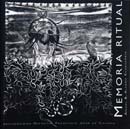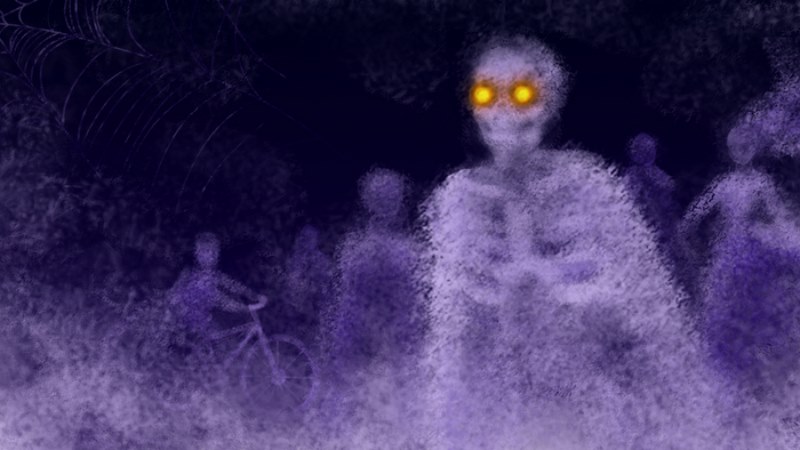In Memoria Ritual (Ritual Me-mory), Cuban fine artist Angel Alfaro Echevarria sets out a historic and imaginary voyage in an effort to offer an artistic vision of the Yoruba world. In its narrative layout, the text broaches basic moments in the evolution of the African peoples, especially in the conformation of the mystic and artistic imaging. In the course of this process, the book presents a thoughtful journey that takes the reader through the complex Cuban Santeria or Regla de Osha system with plentiful illustrations about the origin of the Orisha world and the rituals that take place in this magical and religious universe. On the other hand, Ritual Memory’s poetic trip recreates –by the hand of the imagination of this drawer and painter– the mystic realm subjected to inquiries as he sheds light on this religious system for the contemporary reader.
The voyage kicks off with an assessment of oral narration as the basic way for the conservation and transmission of Africa’s cultural memory. The presentation of chants and the recreation of poetic expressions show that this oral tradition of the Yoruba people is the tool the author makes use of to open up the gates of this world of gods who act on a daily basis as they show the way of how relationships among men must be, as well as their ties with the natural surroundings.
The book carries on with a peek into the texts on Africa and its civilizations. Perhaps it was Herodotus the first to mention Africa before the Christian era. Historian Pierre Bertaux points out that “in 146 BC, following the destruction of Carthage, the Romans constituted with the part of their former territory comprising the north of today’s Tunisia, a new province, the province of Africa.” Thanks to the expansion of Islam, stories about this new land soon popped up. History keeps tabs on texts written by Arab travelers and chroniclers who made descriptions about the mainland’s west side, far beyond the desert, somewhere between the years 900 and 1300.
From an ethnographic and geographical viewpoint, the word Africa has embraced different contents along the path of history. The Romans used this term to exclusively refer to the northern part of the continent. The Greeks called Ethiopians those men of “black or burned face” who lived south of the Sahara. The name Ethiopia –it means the country of blacks– was used in the past to refer to the lands of Nubia next to the Nile. Furthermore, the Portuguese settlers adopted the name of
Guinea from the Berbers to pinpoint the West African region. This marked the difference between the so-called Africa, home to men belonging to the Semitic race, and the region of Ethiopia and Guinea inhabited by people of black race.
Historic texts indicate that African writings about Africa are nearly nonexistent before what we call the modern age. However, the Africans left marks of their lifestyle through a bevy of artistic expressions. With a view to highlight those other forms of writing history, the book author sticks to an imaginary course through the African towns “on a solar boat from the Sahara all the way down to Nigeria.” This trip includes the journey of Orula, the wise Orisha who wanders the lands of former civilizations under the orders of Olofi, the creator of everything on earth. Orula learned about the world and about the gods from the Egyptians.
While memories were being carved in stone in Egypt, far to west other peoples were driving their herds of cattle, following the watercourses down the desert. These shepherds also left cave paintings with scenes of their pasture adventures, scenes that in the so-called Sahara paintings are known as the bovidae period. The long sauntering down the desert prompted forms of commercial relationships that paved the way for encounters between people from the Mediterranean and dwellers of the Nile Valley, ancient black inhabitants who left behind the desert areas and marched on to the prairies and jungles of the Gulf of Guinea.
Alongside the goods those human groups used to carry with them during the first millennium AD, also came the wrought-iron techniques, a development that prodded the emergence of the Nok Culture in Nigeria somewhere between 500 BC and 300 AD. Nok figures carved in terra cotta, with representations of human heads and whose letters belong to black Africa’s icon writing, are highly important for the history of the arts. Today’s masks from the Yoruba art show signs of the former Nok style.
Southeast from Nigeria, in the state of Oyo, the city of Ife –founded approximately in the year 850– is penciled in as the place of origin of the Yoruba ethnical group, along with its many ramifications through the Kingdom of Dahomey and Togo all the way to Ghana. The city’s religious imaginary is sacred: in it, the gods came down from heaven to populate the world and the first king who reigned there was Oduduwa. That was also the first divinized ancestor whose offspring ruled the seven kingdoms of the Yoruba empire.
The author underscores the flourishing of the sculptural arts in Ife between the 11th and 15th centuries. The classic pieces are series of royal heads carved in terra cotta and metal: tin, copper and bronze. Ife’s bronze art was handed down to the city of Owo and from there to the kingdom of Benin, where it boomed between the 15th and 16th centuries. Another town of artists, sculptors and silversmiths was Ghana’s Ashanti, whose inhabitants also expressed themselves through woodcarvings of daily and ritual objects, modalities that characterize the African arts overall.
From the 16th century to the 19th century, some 15 million human beings were plucked out of different African regions as a result of the slave trade. The author of Ritual Memory lays out the routes of slavery to the Americas and delves into geographical and ethnical origin of those rootless people. The text illustrates how the different slave groups brought along their gods, rituals and myths, their dances, their chants and drumbeating, their vision of the origin and creation of the universe, as well as their conceptions about nature.
Based on the longstanding cross-cultural process of the Yoruba peoples’ ritual memory, carried out in the context of the history of Cuba, the author explains to us who the Orishas really are, what their origins are and how they melt into Cuban Santeria’s religious syncretism. At the same time, the drawer and painter also illustrates the images and attributes of each and every deity, the patakies or poetic narrations that single them out, as well as the religious worshipping they were offered. Thus, the book goes its informative task and comes to us as an artistic text that could perfectly become an offering.
Ritual memory: Angel Alfaro Echevarria, Universidad Francisco Jose de Caldas, Bogota, 2007.

Publicación anterior Cildo Meireles. Against hegemonic ideas in art
Publicación siguiente A Galician in The Caribbean
Publicaciones relacionadas

Obras de García Márquez para celebrar Halloween
Octubre 30, 2024
Cerrado por obras: Museo Sorolla
Octubre 29, 2024
La Mascarada llena de color y vida a Costa Rica
Octubre 28, 2024















